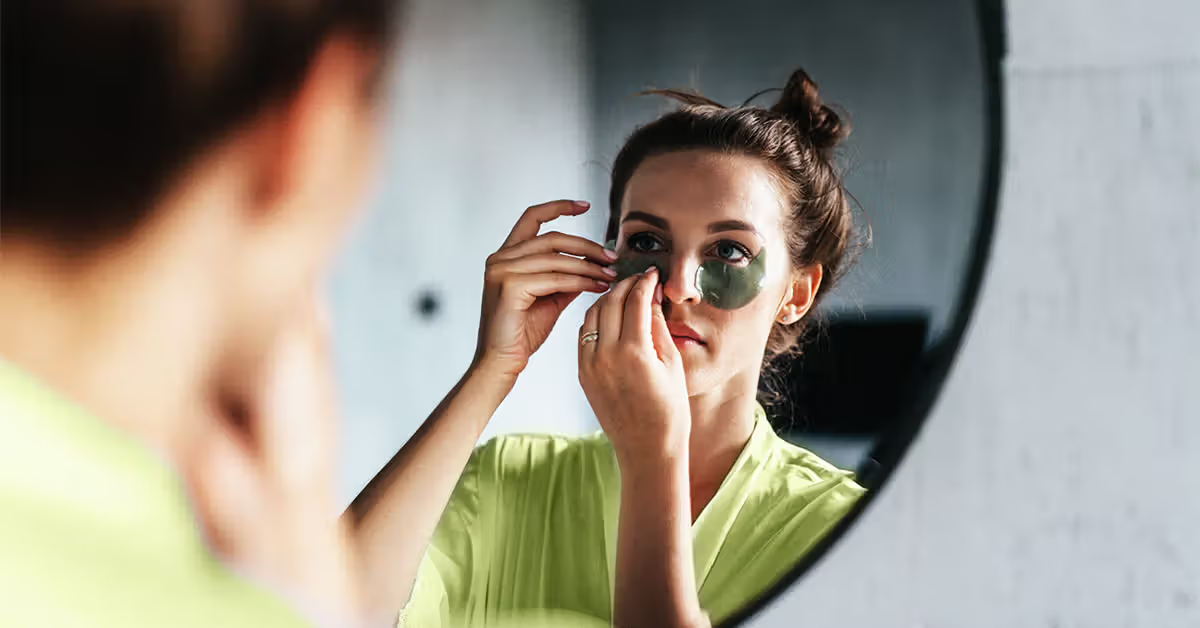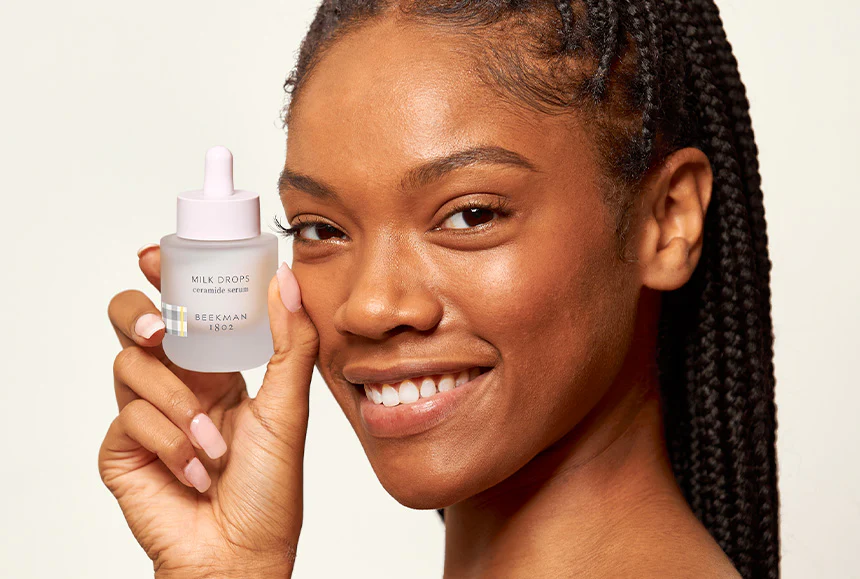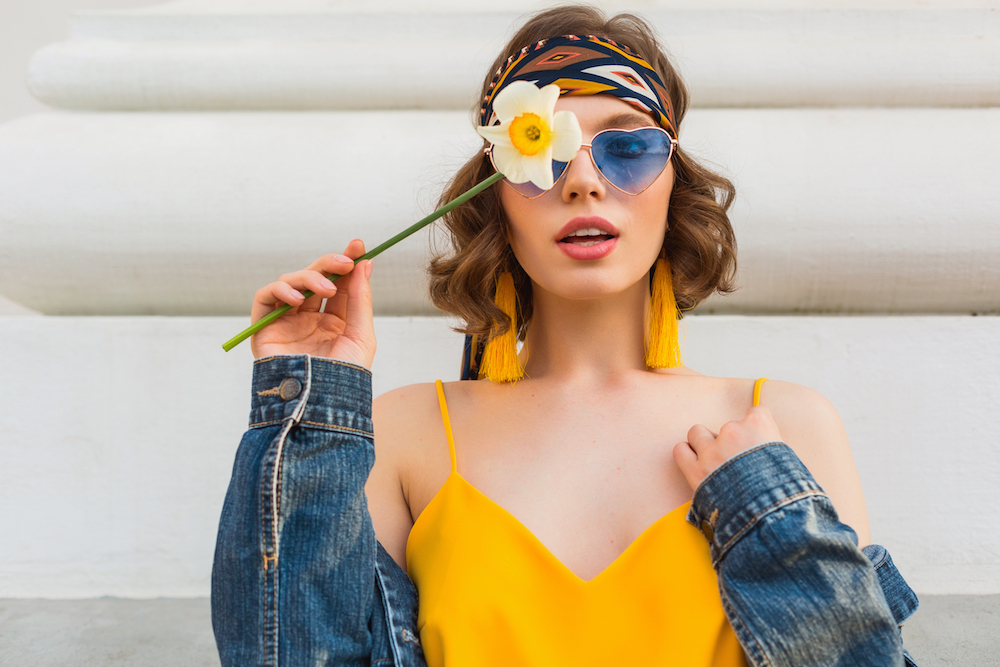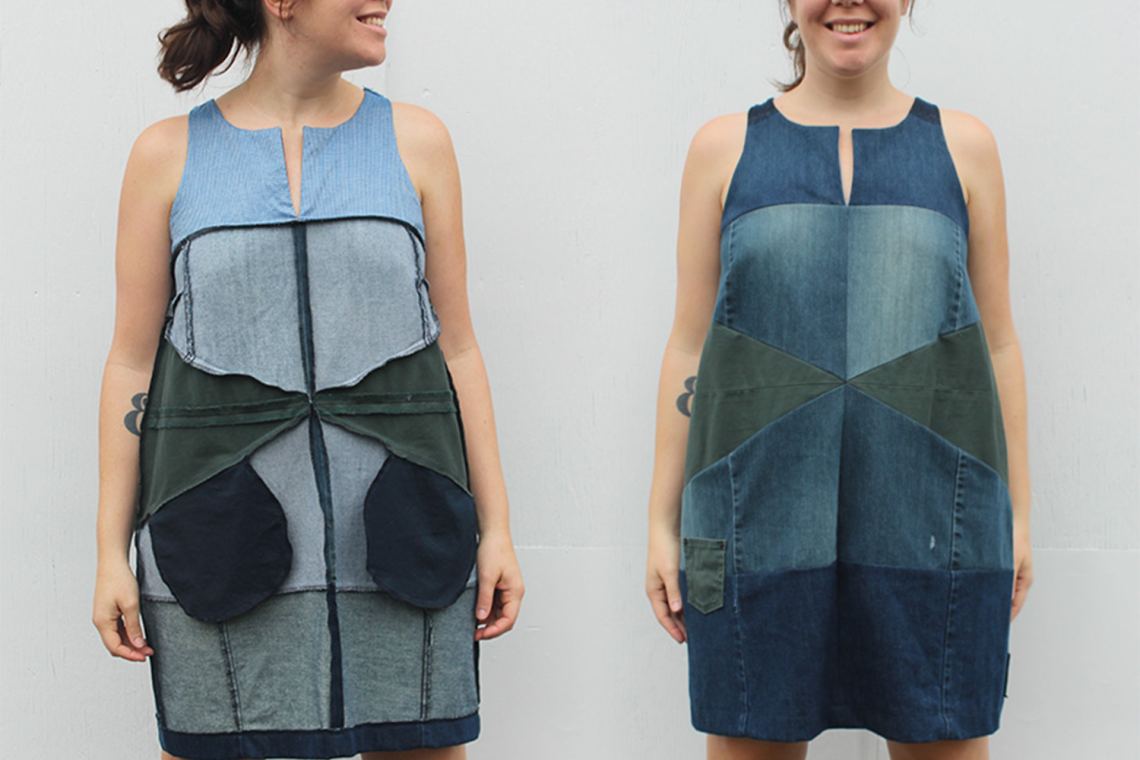The Rise of Conscious Beauty: Embracing Clean Ingredients and Holistic Wellness
Clean beauty and wellness refers to products formulated without potentially harmful ingredients, focusing instead on natural, non-toxic components that benefit both personal health and the environment.
Here’s what you need to know about clean beauty and wellness:
- Key principles: Non-toxic ingredients, transparency, ethical sourcing, and sustainability
- Common avoided ingredients: Parabens, phthalates, sulfates, synthetic fragrances, and formaldehyde
- Benefits: Reduced exposure to potential toxins, fewer skin irritations, and environmentally friendly practices
- Challenges: No standardized definition or regulation of “clean beauty” claims
The clean beauty movement has evolved significantly over the past decade, changing from a niche market to a mainstream approach to personal care. As consumers become increasingly aware of what they put on their bodies, the demand for products free from potentially harmful chemicals has surged. This shift represents more than just a trend—it’s a fundamental change in how we think about beauty and wellness.
“Skin is the body’s largest organ, and what we put on it matters. Clean beauty products support healthier skin by avoiding harsh chemicals and focusing on nourishing, safe ingredients,” notes Dr. Quinn, highlighting why so many people are making the switch to cleaner formulations.
What makes this movement particularly powerful is its holistic approach. Clean beauty isn’t just about skincare—it encompasses makeup, haircare, body products, and even extends to overall wellness practices. It’s about making conscious choices that benefit both personal health and the planet.
For those new to clean beauty, navigating the sometimes confusing world of claims, ingredients, and certifications can feel overwhelming. Without standardized regulations, terms like “natural,” “clean,” and “non-toxic” can vary widely between brands. This guide aims to explain clean beauty and wellness, helping you make informed choices that align with your values and skin needs.

Understanding Clean Beauty and Wellness
The world of clean beauty and wellness isn’t just a trend—it’s a movement with deep roots and thoughtful principles. Let’s explore how this approach to beauty evolved and what makes it different from traditional beauty products.
The Origins and Evolution of Clean Beauty and Wellness
Remember when nobody really questioned what was in their shampoo or face cream? Those days are long gone! The clean beauty movement began taking shape in the early 2000s when curious consumers started asking uncomfortable questions about their favorite products.
“What exactly am I putting on my skin every day?”
This simple question sparked a revolution. Around 2010, as research raised eyebrows about certain chemicals lurking in our bathroom cabinets, what was once a small group of concerned beauty lovers grew into a powerful force for change.
“The clean beauty movement is driven by a desire for safer, healthier, and more ethical beauty products,” explains Susan McMenamin, founder of a popular clean beauty brand.
The journey from fringe to mainstream happened in distinct waves:
Early 2000s: The first whispers of concern about ingredients began circulating among health-conscious consumers.
2010-2015: Pioneering clean beauty brands emerged, creating safe alternatives while educating consumers about ingredients.
2016-2020: Clean beauty hit the mainstream, with major retailers creating “clean” sections and consumers becoming label readers.
2021-Present: The focus has shifted toward scientific validation of claims and deeper commitments to sustainability.
A recent 2024 study confirmed what many of us already suspected—younger consumers (especially Millennials and Gen Z) now consider ethics and sustainability essential factors when choosing cosmetics. This shift has even the most traditional beauty giants reconsidering their formulas and practices.
Core Principles of Clean Beauty and Wellness Products
At its heart, clean beauty and wellness stands on several foundational principles that set it apart from conventional beauty approaches.
Non-toxic ingredients form the cornerstone of clean beauty. These products skip potentially harmful ingredients like parabens, phthalates, sulfates, and synthetic fragrances. Instead of asking “why not?” these brands ask “why?” before including any ingredient.
Transparency shines through in how clean beauty brands communicate. Rather than hiding behind vague terms like “fragrance” (which can legally contain hundreds of undisclosed chemicals), they provide clear, complete ingredient lists so you know exactly what you’re applying to your body.
Ethical sourcing matters deeply in this community. Many clean beauty brands develop relationships with suppliers who use fair trade practices and sustainable harvesting methods that respect both people and ecosystems.
Sustainability extends beyond just the product formula to packaging choices, manufacturing processes, and corporate practices. From biodegradable packaging to carbon-neutral shipping, environmental consciousness influences every decision.
Cruelty-free practices are standard, with most clean beauty brands proudly stating their products are never tested on animals. Many seek certifications to verify these claims.
Efficacy remains non-negotiable. Despite what skeptics might think, clean beauty brands are committed to creating products that actually work—just without the questionable ingredients.
The mantra “For planet. For people. For beauty” captures the holistic philosophy that considers both human and environmental wellbeing as inseparable from true beauty.
| Aspect | Clean Beauty | Conventional Beauty |
|---|---|---|
| Ingredients | Avoids potentially harmful chemicals; focuses on plant-based and naturally derived ingredients | May contain parabens, phthalates, synthetic fragrances, and other controversial ingredients |
| Transparency | Typically offers full ingredient disclosure | May use proprietary formulas or vague ingredient listings |
| Packaging | Often uses recyclable, biodegradable, or minimal packaging | Varies widely, with many using non-recyclable plastics |
| Testing | Predominantly cruelty-free | May conduct or commission animal testing |
| Environmental Impact | Generally aims to minimize ecological footprint | Environmental considerations vary by brand |
| Price Point | Often higher due to quality ingredients and ethical practices | Ranges from budget to luxury |
When you choose clean beauty, you’re not just buying a product—you’re supporting a vision for a healthier relationship between beauty, people, and our planet. It’s about feeling good about what you put on your skin, not just how it makes your skin look.
Benefits of Clean Beauty for Skin Health and Wellness

When we talk about clean beauty and wellness, we’re not just discussing a trendy movement—we’re exploring a genuine path to healthier skin and overall wellbeing. The benefits go far beyond simply avoiding questionable ingredients; they extend to how your skin feels, looks, and functions day after day.
Skin Health and Non-Toxic Ingredients
Think about it: your skin absorbs what you put on it. It’s like feeding your largest organ a daily diet—shouldn’t you care what’s in that diet?
Clean beauty products eliminate common irritants that might be causing those mysterious rashes or breakouts you’ve been battling. Without synthetic fragrances—one of skincare’s most notorious troublemakers—many people notice their skin calming down almost immediately.
“When we removed synthetic fragrances from our routine, we noticed a significant decrease in customer complaints about skin irritation,” a product developer at Beyond Beauty Lab shared with me recently. “It reinforced our commitment to fragrance-free or naturally scented formulations.”
Your hormones will thank you too. Conventional products often contain parabens and phthalates, which research suggests may disrupt your endocrine system. Clean beauty formulations skip these potential hormone disruptors entirely, giving your body one less thing to fight against.
Even the way clean products are preserved makes a difference. Instead of harsh formaldehyde-releasing preservatives, clean brands opt for gentler alternatives that keep your products safe without the potential health concerns. Your skin’s natural barrier—that precious protection system that keeps moisture in and irritants out—often thrives with clean formulations rich in ceramides, fatty acids, and nourishing plant oils.
Wellness Beyond Skin Care
Clean beauty and wellness is about the whole you—not just your complexion. This holistic approach transforms simple daily routines into meaningful moments of self-care.
That nighttime skincare ritual becomes more than just cleansing and moisturizing. With clean products, it’s a mindful practice that helps melt away the day’s stress. Many users report feeling their shoulders drop and breathing deepen as they massage in products with natural, subtle scents rather than overpowering synthetic fragrances.
Sleep—that magical time when your skin repairs itself—often improves with clean wellness routines. Some formulations include ingredients specifically chosen to promote relaxation and deeper rest. And better sleep doesn’t just feel good; research shows even one night of poor sleep can accelerate skin aging. Who needs that?
The antioxidant benefits in clean beauty products are particularly exciting. Take CBD, for example—a star ingredient in many clean formulations. Research published in the National Library of Medicine shows CBD is actually a more powerful antioxidant than vitamins C and E, two skincare superstars we already adore.
One customer’s experience captures this perfectly: “I am obsessed with Sunshine Serum! Packed with Hemp and Vitamin C, it absorbs quickly in my skin. I won’t go without this!” – Rachel W.
There’s also something wonderfully freeing about reducing your body’s overall toxic load. By choosing clean products across your entire routine, you’re giving your natural detoxification systems a break. Your liver and kidneys have enough to do without processing questionable chemicals from your beauty products!
And let’s not forget the emotional lift that comes from natural scents. Instead of synthetic fragrances designed in a lab, clean beauty products often feature botanical essential oils that not only smell divine but can actually shift your mood. Feeling anxious? A touch of lavender-infused face oil might be just what you need. Needing energy? Citrus-based products can provide that natural morning boost.
“Beauty brands have a responsibility to lift ethical and sustainable practices,” a clean beauty advocate recently noted. “The industry should move beyond traditional profit motives to incorporate social and environmental benefits.”
At Beyond Beauty Lab, we firmly believe that true beauty flourishes when we nurture both our appearance and inner wellbeing. Clean beauty isn’t just about looking good—it’s about feeling good in your own skin, knowing you’re making choices that support your health from the inside out.
Navigating Ingredient Transparency and Ethical Sourcing

Let’s face it—the beauty aisle can feel like a jungle of confusing claims and pretty packaging. When it comes to clean beauty and wellness, knowing what’s actually in your products (and where those ingredients come from) makes all the difference between marketing hype and genuine goodness for your skin and the planet.
Recognizing Truly Clean Beauty Products and Avoiding Greenwashing
We’ve all been there—captivated by a bottle with leaves on the label and the word “natural” splashed across it, only to flip it over and find an ingredient list that might as well be written in another language. As clean beauty has grown from niche to mainstream, so has “greenwashing”—when brands make their products seem more natural or eco-friendly than they really are.
Without clear regulations defining what “clean” actually means, it’s up to us as consumers to become beauty detectives.
Trust certifications over trendy buzzwords. While there’s no single official “clean beauty” stamp of approval, several respected certifications can help guide your choices. USDA Organic verification means agricultural ingredients were grown without synthetic pesticides. COSMOS/ECOCERT standards ensure natural and organic cosmetic quality. If you care about animal welfare, look for Leaping Bunny or PETA Cruelty-Free logos. For ingredient safety, EWG Verified and Made Safe certifications are gold standards, while Fair Trade Certified products support ethical labor practices.
“What does ‘clean beauty’ really mean given there is no standardized framework?” This question haunts many conscious consumers. The answer isn’t simple, but it starts with looking beyond the marketing to the actual practices and ingredients.
Be especially wary of vague, feel-good terms. Words like “all-natural,” “pure,” and (my personal favorite) “chemical-free” have no standardized definitions. Water is a chemical! Instead, look for specific information about what’s included and what’s deliberately left out.
Real transparency means full ingredient disclosure. Authentic clean beauty brands are typically eager to share their full ingredient lists, often explaining why they’ve chosen specific ingredients over others. At Beyond Beauty Lab, we believe consumers deserve to know exactly what they’re putting on their bodies.
Do a little homework on brands that catch your eye. The most authentic clean beauty companies are usually passionate about their mission and openly share their sourcing practices, manufacturing ethics, and formulation philosophy on their websites or social media.
Want to dig deeper? Check out our guide on reading clean beauty ingredients like a pro to understand not just what ingredients to avoid, but why, and which alternatives are both safe and effective.
The Role of Sustainability in the Clean Beauty Industry
True clean beauty and wellness doesn’t stop at non-toxic ingredients—it extends to how those ingredients are sourced and what happens to the packaging after you’ve squeezed out the last drop of your favorite serum.
“For planet. For people. For beauty.” This simple mantra captures what sustainable clean beauty is all about—a holistic approach that considers both human and environmental health. It’s not just about what’s good for your skin today, but what’s good for our world tomorrow.
Eco-friendly packaging has become a major focus for forward-thinking brands. Glass and aluminum are making a comeback because they’re infinitely recyclable. Some companies are pioneering refillable systems that let you keep the pretty container and just replace the product inside. Others are experimenting with biodegradable packaging made from mushrooms or seaweed. Even the humble cardboard box is getting a sustainable makeover with seed-embedded paper you can plant after unboxing your new facial oil.
The journey of ingredients from farm to face matters enormously. Sustainable ingredient sourcing practices include wild-harvesting techniques that preserve plant populations for future generations. Some brands partner with indigenous communities who have cultivated traditional beauty ingredients for centuries, ensuring fair compensation and respect for cultural knowledge. Progressive companies are also embracing regenerative farming methods that actually improve soil health rather than depleting it.
“The beauty industry should be a force for good,” notes one industry observer. This sentiment is increasingly reflected in how brands approach their environmental footprint. Water conservation has become critical, with some innovative companies developing waterless formulas or manufacturing processes that dramatically reduce water usage. Others focus on reducing their carbon footprint through local sourcing, renewable energy in their facilities, or meaningful carbon offset programs.
A 2025 impact report from one leading clean beauty brand shows the industry’s growing commitment to measuring and improving sustainability metrics. It’s no longer enough to simply claim to be “green”—consumers want proof and progress.
At Beyond Beauty Lab, we believe that true beauty emerges when we honor both our bodies and our planet. By choosing brands that prioritize both clean ingredients and sustainable practices, we can enjoy our beauty routines knowing they align with our values—and maybe even help make the world a little more beautiful in the process.
Addressing Misconceptions and Challenges in Clean Beauty

Let’s face it—navigating clean beauty and wellness can sometimes feel like trying to solve a puzzle with missing pieces. Despite its growing popularity, there are plenty of misconceptions and challenges that can leave even the most dedicated beauty enthusiasts scratching their heads. Let’s clear up some of this confusion together.
Misconceptions About Natural vs. Synthetic Ingredients
Perhaps the biggest myth in clean beauty is the idea that “natural equals good” and “synthetic equals bad.” This black-and-white thinking doesn’t capture the beautiful complexity of cosmetic chemistry.
Think about it this way: poison ivy is completely natural, but you definitely don’t want it in your face cream! On the flip side, synthetic hyaluronic acid is molecularly identical to what your body produces naturally and has an excellent safety profile.
Natural ingredients aren’t automatically safer. I’ve seen countless clients develop irritation from “all-natural” products containing potent essential oils. These oils, while derived from plants, can be powerful allergens for sensitive skin. Natural ingredients also vary tremendously in potency depending on where and how they’re grown—making consistency a real challenge.
“The clean beauty movement sometimes replaces traditionally safe ingredients with less tested alternatives simply because they sound more natural,” explains Dr. Michelle Harper, a dermatologist specializing in cosmetic formulations. “This well-intentioned approach can occasionally backfire.”
Synthetic ingredients aren’t automatically harmful either. Many have decades of safety research behind them. Some synthetic preservatives, for instance, might actually be safer than certain natural alternatives when it comes to preventing dangerous bacterial growth in your products.
At Beyond Beauty Lab, we believe the sweet spot lies in balance. We evaluate ingredients based on safety data and efficacy, not just whether they came from a lab or a garden. The most thoughtful brands in the industry take this same evidence-based approach, focusing on what works safely rather than dogmatically following trends.
Regulatory Gaps and the Importance of Research
Here’s a startling fact that surprises many of my clients: in the United States, cosmetic products (except color additives) don’t require FDA approval before hitting store shelves. This regulatory landscape creates some significant challenges:
There’s no official definition of “clean beauty.” Without legal standards defining this term, brands can use it in wildly different ways. One company’s “clean” might mean “paraben-free,” while another’s encompasses dozens of avoided ingredients plus sustainable packaging and ethical sourcing.
This lack of standardization puts a heavy burden on us as consumers. We essentially need to become our own researchers, reading ingredient lists like mini-detectives and critically evaluating brand claims.
“There’s legitimate skepticism about some clean beauty claims due to the lack of large-scale, consistent research,” notes beauty industry analyst Sophia Chen. “This doesn’t mean the movement lacks merit, but it does highlight the need for more scientific studies and standardized frameworks.”
An interesting question that often comes up is: “If there’s limited research showing certain ingredients are harmful, does that mean they’re definitely safe?” The answer isn’t straightforward. Absence of evidence isn’t evidence of absence—meaning just because research hasn’t conclusively proven harm doesn’t automatically make an ingredient safe for everyone.
This is why at Beyond Beauty Lab, we’re passionate about providing educational resources that help you make informed decisions based on current scientific understanding, not fear or marketing hype. We believe knowledge is power—especially in an industry where regulations haven’t quite caught up to consumer concerns.
The clean beauty conversation is evolving, and it’s becoming more nuanced and science-based every day. By staying informed and approaching both natural and synthetic ingredients with an open but critical mind, you’ll be well-equipped to make choices that work for your unique skin and values.
Making Informed Choices for Your Skin Needs

Navigating clean beauty and wellness can feel like trying to decode a secret language. With countless products making various claims, how do you find what truly works for your unique skin? Let’s break down this process into something that feels less overwhelming and more empowering.
Identifying Potential Irritants, Allergens, and Endocrine Disruptors
Your skin is as unique as your fingerprint. What causes one person to break out in hives might give someone else that coveted glow. Understanding your personal triggers is the first step toward clean beauty success.
When examining product labels, pay special attention to common irritants that might affect sensitive skin. Synthetic fragrances (often hiding behind the vague term “fragrance” or “parfum”) are among the most common culprits behind skin reactions. Even essential oils, despite their natural origin, can cause significant irritation for some people—particularly citrus and mint varieties.
“I thought my skin was just ‘sensitive’ until I realized it was specifically reacting to the lavender essential oil in my ‘natural’ moisturizer,” shares Maria, a Beyond Beauty Lab community member. “Once I eliminated that ingredient, my persistent redness disappeared within days.”
Beyond irritants, many clean beauty enthusiasts choose to avoid potential endocrine disruptors—ingredients that some research suggests might interfere with hormone function. These include certain parabens, some phthalates used in fragrances, and chemical sunscreen filters like oxybenzone.
Dr. Leah Thompson, a dermatologist specializing in sensitive skin, offers practical advice: “Start a skin diary to track reactions. When you experience irritation, look back at what products you used in the previous 48 hours. Patterns will emerge that help you identify your personal triggers.”
Your skin’s needs also change with seasons, stress levels, and age. What worked beautifully last winter might cause problems during humid summer months. Being attentive to these changes allows you to adjust your routine accordingly.
Utilizing Resources for Personalized Clean Beauty Choices
Finding your perfect clean beauty and wellness routine doesn’t mean you have to become a cosmetic chemist overnight. Thankfully, there are resources to help you make informed decisions without the overwhelm.
Professional guidance can be invaluable, especially if you’re dealing with specific skin concerns. A dermatologist who understands your interest in clean beauty can help steer you toward ingredients that address your skin issues while avoiding unnecessary irritants. Estheticians with clean beauty knowledge can also provide personalized recommendations based on your skin’s specific needs.
“Don’t be afraid to bring your clean beauty products to your dermatologist appointment,” suggests clean beauty educator Jamie Lin. “Ask them to review the ingredients and help you understand which ones might be helping or potentially harming your skin.”
Online educational tools can also help you make sense of complex ingredient lists. Resources like the Environmental Working Group’s Skin Deep database allow you to search specific ingredients and products to learn about potential concerns. Beyond Beauty Lab’s guide on reading clean beauty ingredients like a pro can help you develop this skill yourself.
Community insights from others with similar skin concerns can be surprisingly helpful. Real user experiences often reveal information about texture, scent, and efficacy that brand descriptions might gloss over. Just remember that someone else’s holy grail product might not work the same magic for you.
When building your personalized routine, start with the basics rather than overhauling everything at once. Begin with daily essentials like cleanser and moisturizer, then gradually introduce treatment products. This measured approach not only protects your wallet but also makes it easier to identify which products truly make a difference for your skin.
Budget considerations matter too. Clean beauty and wellness products exist at various price points, and expensive doesn’t always mean better. Sometimes the most effective product for your skin is surprisingly affordable, as explained in our guide to clean beauty on a budget.
“The best clean beauty routine is one you can maintain consistently,” reminds Dr. Thompson. “Finding products that fit your budget, address your concerns, and feel enjoyable to use is far more important than chasing the latest trendy ingredient.”
Your clean beauty journey is personal. What matters most is finding products that make your skin—and you—feel good, while aligning with your values around ingredient safety, sustainability, and efficacy.
Frequently Asked Questions about Clean Beauty and Wellness
If you’re diving into clean beauty and wellness, you probably have some questions. Let’s tackle some of the most common ones we hear from our community at Beyond Beauty Lab.
What certifications should I look for when choosing clean beauty products?
Walking down the beauty aisle can feel like navigating a jungle of logos and seals. While there’s no single “official” clean beauty certification (wouldn’t that make life easier?), several trustworthy certifications can help guide your choices:
The USDA Organic seal is your friend when looking at products with lots of plant ingredients. It confirms these botanical ingredients were grown according to federal organic standards – no synthetic pesticides or GMOs here!
COSMOS/ECOCERT certifications come from Europe and take a comprehensive approach, evaluating everything from ingredients to manufacturing and packaging. These are pretty rigorous standards.
If animal welfare matters to you (and we think it should!), look for the Leaping Bunny or PETA Cruelty-Free logos. These verify that no furry friends were harmed in testing at any stage of development.
The EWG Verified mark means a product meets the Environmental Working Group’s strict health criteria – they’re particularly focused on avoiding ingredients with potential health concerns.
Products with Made Safe certification are formulated without ingredients known to harm human health, while Fair Trade Certified ingredients ensure farmers and workers received fair compensation.
Smaller indie brands might make wonderful clean products but can’t always afford multiple certifications. In these cases, look for transparency about their ingredients and practices instead.
How can I avoid greenwashing when selecting beauty products?
Ah, greenwashing – when marketing makes products seem more eco-friendly than they actually are. It’s everywhere in beauty these days, but you can outsmart it:
Don’t fall for pretty green packaging or buzzwords like “natural,” “pure,” or “eco” on their own. These terms have no regulated definitions, so brands can use them pretty freely.
Transparency is your best friend. Great clean beauty brands are usually excited to share details about their ingredients, sourcing methods, and manufacturing processes. If this information seems deliberately hidden or vague, consider it a red flag.
Always flip that bottle over and read the full ingredient list. Front-label claims might say “no parabens,” but what else is in there? Get familiar with ingredients you personally want to avoid.
“Some brands create a ‘clean’ image while their parent companies have questionable practices,” notes a beauty industry watchdog. If corporate ethics matter to you, take a minute to research who actually owns that seemingly earth-friendly brand.
Be skeptical of sweeping environmental claims without specifics. “Eco-friendly” sounds nice, but what does it mean for this specific product? Look for concrete practices like recyclable glass packaging or regenerative farming partnerships.
Are natural ingredients always safer than synthetic ones?
This might be the biggest misconception in clean beauty. The truth? Natural isn’t automatically safer, and synthetic isn’t automatically harmful.
Mother Nature makes some powerful stuff – poison ivy is 100% natural, but you wouldn’t want it in your face cream! Natural ingredients can absolutely cause irritation and allergic reactions. Essential oils, while wonderful in many ways, are common skin sensitizers for many people.
Natural ingredients can also vary widely in quality. The lavender oil in your serum might be completely different from batch to batch depending on growing conditions, weather, and harvesting practices.
On the flip side, synthetic ingredients often have extensive safety testing behind them. Many are specifically designed to be gentle and predictable on skin. Some synthetic preservatives might actually be safer than natural alternatives when it comes to preventing harmful bacteria growth in water-based products.
“I see patients with reactions to natural products all the time,” shares a dermatologist we work with. “Your skin doesn’t care if something is natural or synthetic – it only cares if it’s irritating or beneficial to your specific skin.”
At Beyond Beauty Lab, we believe the most thoughtful approach is evaluating ingredients based on safety data and your personal skin needs rather than making blanket judgments based solely on whether something comes from a lab or a plant. After all, water is a chemical too!
The clean beauty journey is personal, and we’re here to help you steer it with confidence rather than confusion. Have more questions? We’re always adding to our educational resources to help you make informed choices that work for your unique needs.
Conclusion
As we’ve journeyed through clean beauty and wellness together, it’s clear this movement represents far more than just another beauty trend. It’s a fundamental shift in how we think about personal care—one that values transparency, safety, and sustainability alongside beautiful results.
If your head is spinning a bit from all the information we’ve covered, you’re not alone! The clean beauty landscape can feel overwhelming with its specialized terminology, lack of standardized regulations, and sometimes contradictory advice. But don’t worry—that’s exactly why we created this guide.
The beauty of clean beauty (pun intended!) is that you don’t need to make every change at once. Small, thoughtful adjustments to your routine can make a meaningful difference to both your well-being and the planet.
Let’s reflect on what we’ve learned:
First, clean beauty and wellness focuses on ingredients that are safe for both our bodies and the environment. This means avoiding potentially harmful chemicals like certain parabens, phthalates, and synthetic fragrances that might disrupt our hormones or irritate our skin.
We’ve also finded that “natural” isn’t automatically better, and “synthetic” isn’t automatically harmful. The most thoughtful approach is evidence-based—evaluating ingredients based on safety data and research rather than simply their origin. Sometimes, a synthetic ingredient might actually be the safer, more sustainable choice!
Transparency has emerged as a cornerstone of true clean beauty. The brands making a real difference are those willing to share exactly what’s in their products, where those ingredients come from, and how they’re manufactured. No secrets, no vague claims—just honest information that empowers your choices.
While certifications can be helpful signposts on your clean beauty journey, we’ve learned that smaller, independent brands might create wonderful clean products without having the resources for multiple expensive certifications. Looking beyond logos to actual practices often tells the more complete story.
Perhaps most importantly, we’ve emphasized that your personal needs and sensitivities should guide your choices. Clean beauty isn’t one-size-fits-all—what works beautifully for your friend might cause irritation for you. Listening to your skin’s response is essential.
At Beyond Beauty Lab, we believe that informed choices lead to better outcomes—for your skin, your overall well-being, and our shared planet. We’re committed to continuing to provide educational resources that help you steer the sometimes confusing world of beauty claims and ingredients.
As you continue your clean beauty journey, we invite you to stay curious and keep learning. Perfection isn’t the goal—progress is. Each mindful choice you make contributes to a healthier relationship with beauty and wellness.
For more information about specific products that align with clean beauty principles, visit our products section. Your path to clean beauty is personal and changing—accept it as a journey rather than a destination.







